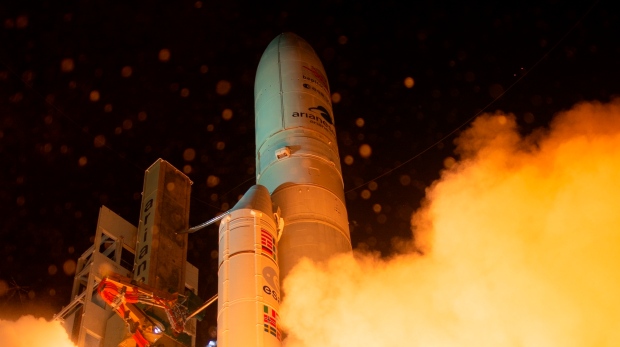Japan And Europe Send Spacecraft on 7-Year Mission to Mercury

The Ariane 5 rocket has successfully lifted carrying a spacecraft with two probes towards the closest planet to the sun – Mercury. The two space agencies are working together for this mission. According to their announcement, the spacecraft called BepiColombo has separated from the rocket and got into orbit as planned. Next, it will have to travel for seven years to reach Mercury.
The spacecraft was named after the Italian scientist Giuseppe (“Bepi”) Colombo.
As soon as the BepiColombo got in the right orbit, it sent the first signal.
According to the European Space Agency, the mission cost USD 1.5 billion, and it’s the most challenging mission in the history because Mercury has extreme temperatures, has an intense gravity pull from the sun and the solar radiation makes the environment a living hell.
To reach Mercury, the spacecraft will have to travel in an elliptical trajectory, which will start by flying by our planet, then surround Venus twice and Mercury six times so that it can slow down and arrive there in December 2025.
At the arrival, the spacecraft will release two probes called Bepi and Mio that will each analyze the surface and Mercury’s magnetic field. The probes will be able to withstand temperatures from 430 degrees Celsius (when the planet faces the sun) and -180 degree Celsius during the night.
ESA’s Bepi will be in Mercury’s inner orbit, while JAXA’s Mio will remain in the outer orbit to get data that shows the internal structure of the planet, but also gather data on the surface and geological evolution.
Learning About Mercury and the Birth of the Solar System
This mission should further the work of NASA’s Messenger probe which ended a four-year orbit of Mercury in 2015. Another spacecraft that visited Mercury was NASA’s Mariner 10 which flew past it in the mid-1970s.
Researchers hope that the BepiColombo mission will help them learn more about the formation of the solar system, explains the ESA Director General, Johann-Dietrich Wörner:
“Beyond completing the challenging journey, this mission will return a huge bounty of science.”
JAXA President Hiroshi Yamakawa stated that:
“We have high expectations that the ensuing detailed observations of Mercury will help us better understand the environment of the planet, and ultimately, the origin of the Solar System including that of Earth.”
0 comments